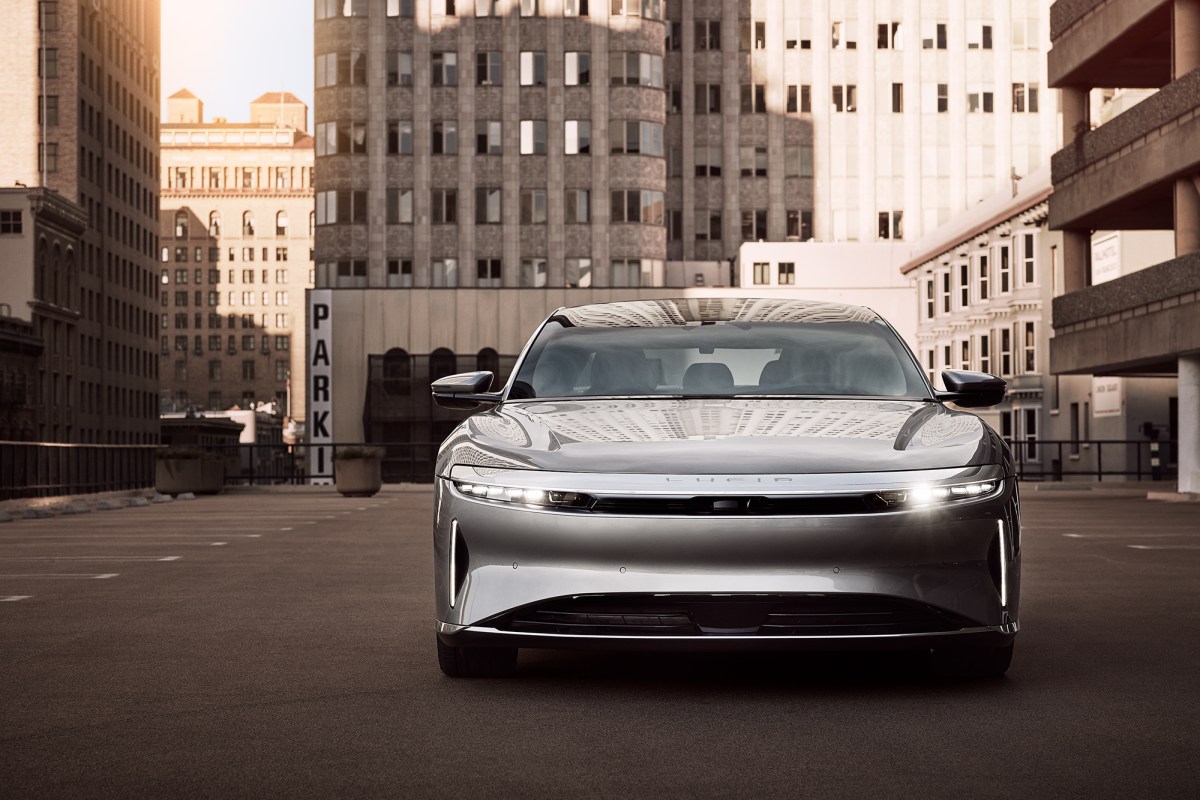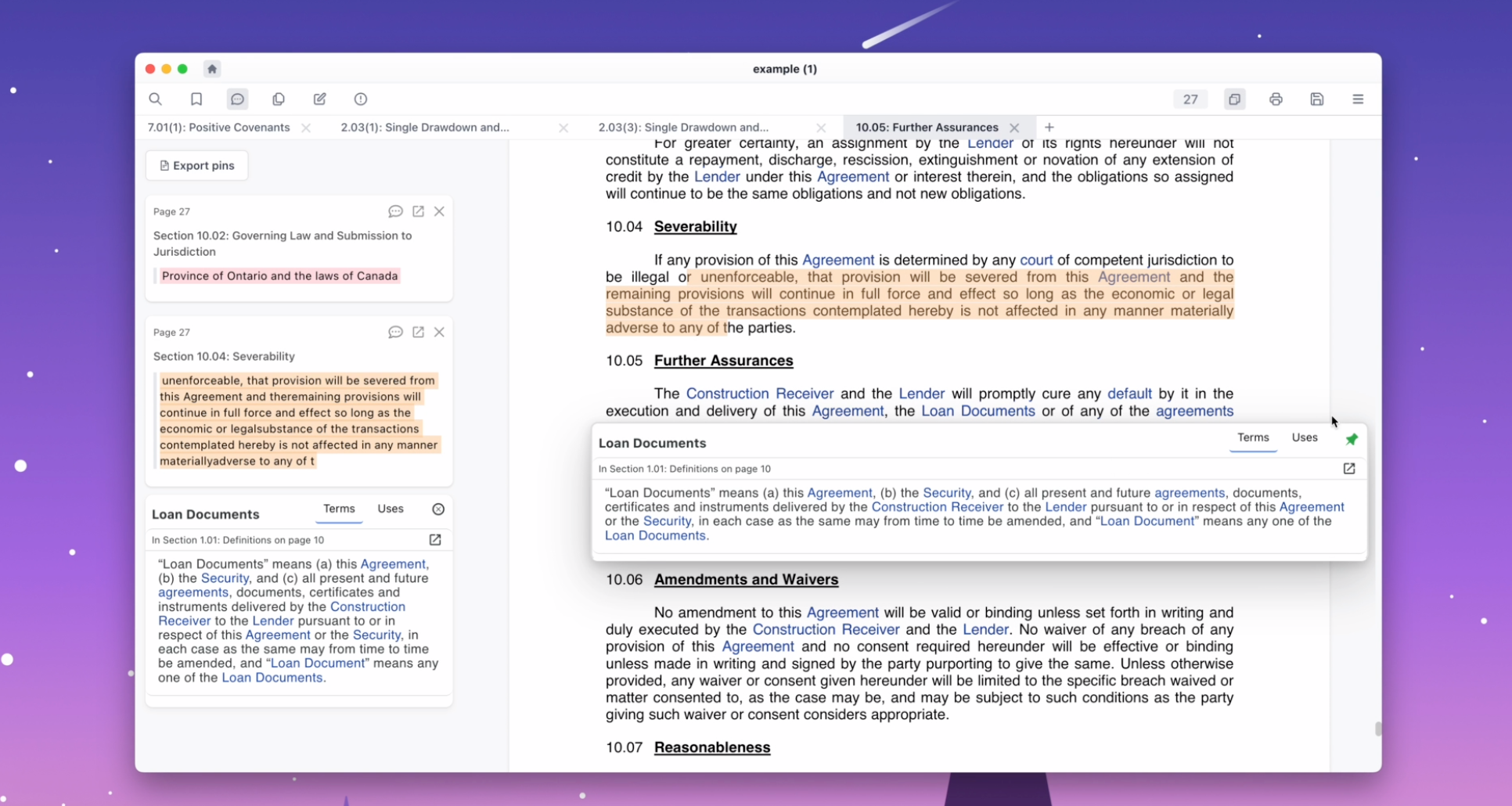Lucid Air Touring review: Some reservations
The battle for market share in the luxury EV sector is heating up, leaving customers with more choice than ever before.
That’s great news for consumers and a pressure cooker for EV makers hoping to carve out market share. The latest entry to this competitive luxury EV landscape is the Lucid Air Touring sedan, a five-passenger sedan that gets an EPA-estimated 384 miles of all-electric range that sits below the Lucid Air Grand Touring sedan and above its entry-level Pure model.
Is the middle-of-the-pack Lucid Air, enough to upend the big players?
After a week of tooling around the wet spring roads in Southern California in the new $120,000+ Lucid Air Touring, I was left with a few reservations.
This was not my first time in the driver’s seat of a Lucid Air.
I drove one of the first few Lucid Air Dream sedans off the production line in Casa Grande, Arizona, in September of 2021. During that drive along a flat, fast route that took me along an Arizona highway, I was impressed with its quickness, seemingly advanced tech, capabilities and speed.
I expected no less in the slightly lighter, lower-range Touring model. And while there were plenty of things that still impressed me, a few features, including the Amazon Alexa voice assistant and driver assistance, left me disappointed.
Understated exterior
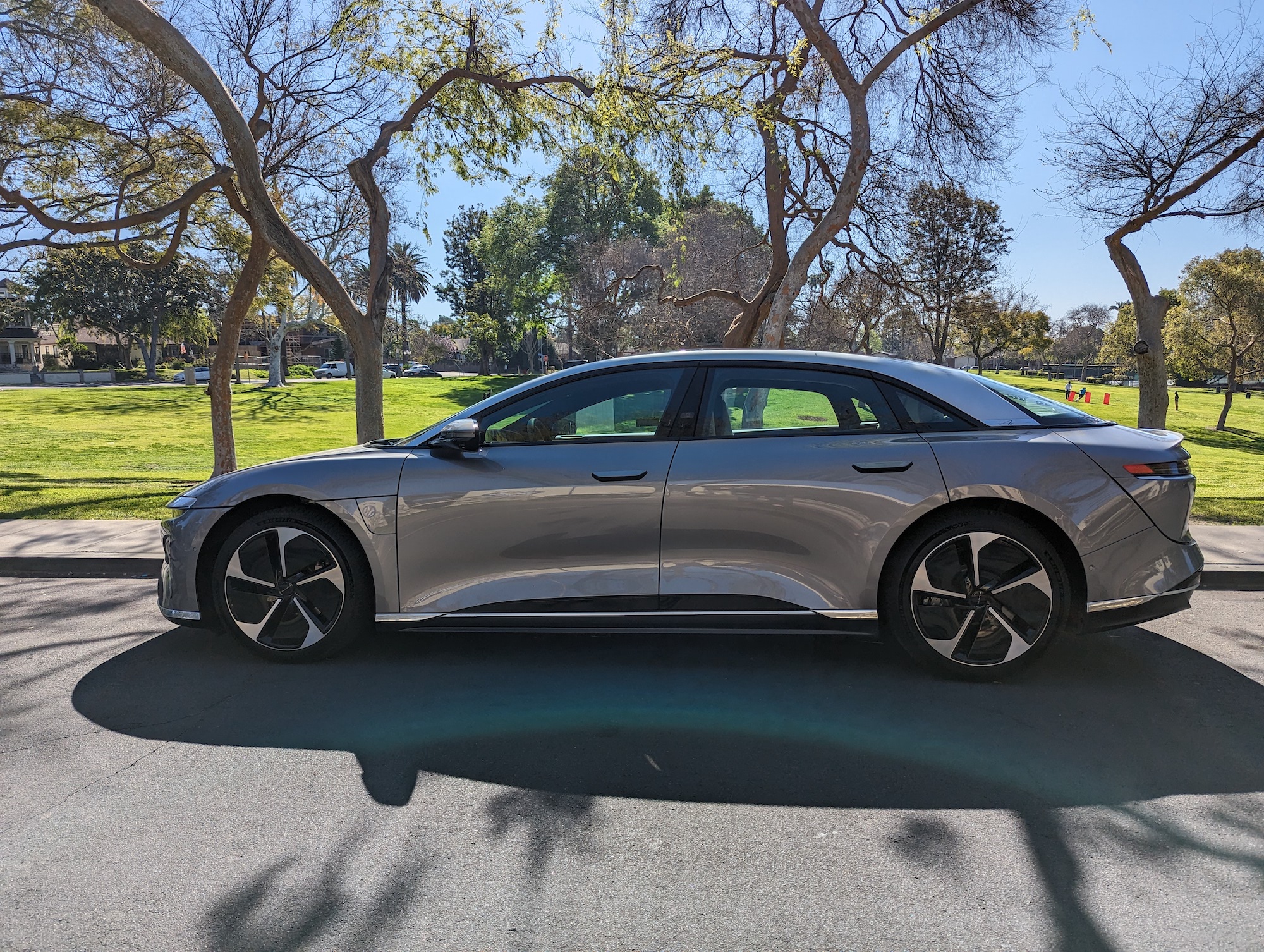
Image Credits: Abigail Bassett
The Lucid Air Touring is more of a sleeper luxury vehicle than an attention grabber. Almost all of the vehicles I test drive get some kind of public response when I’m out and about, yet, surprisingly — and in spite of its sleek spaceship styling — the Lucid Air Touring did not.
That isn’t to say the Touring doesn’t have a few eye-catching design features, notably the optional full-glass roof with its brushed metal c-pillar and its distinctive wide nose with a brushed metal frunk detail and wide lighting signature.
The Lucid Air Touring’s low profile, which includes a short rear deck and long swooping hood, has helped the model secure the lowest drag of any production vehicle on the market, at least according to the company.
The Air gets a 0.197 coefficient of drag, which slots it below the Mercedes EQE sedan and Tesla’s Model S, which get a drag coefficient of 0.200 and 0.208, respectively.
That low drag, combined with its battery pack and efficient electric motors, helps the Touring achieve that EPA range that’s just shy of 400 miles.
Interior
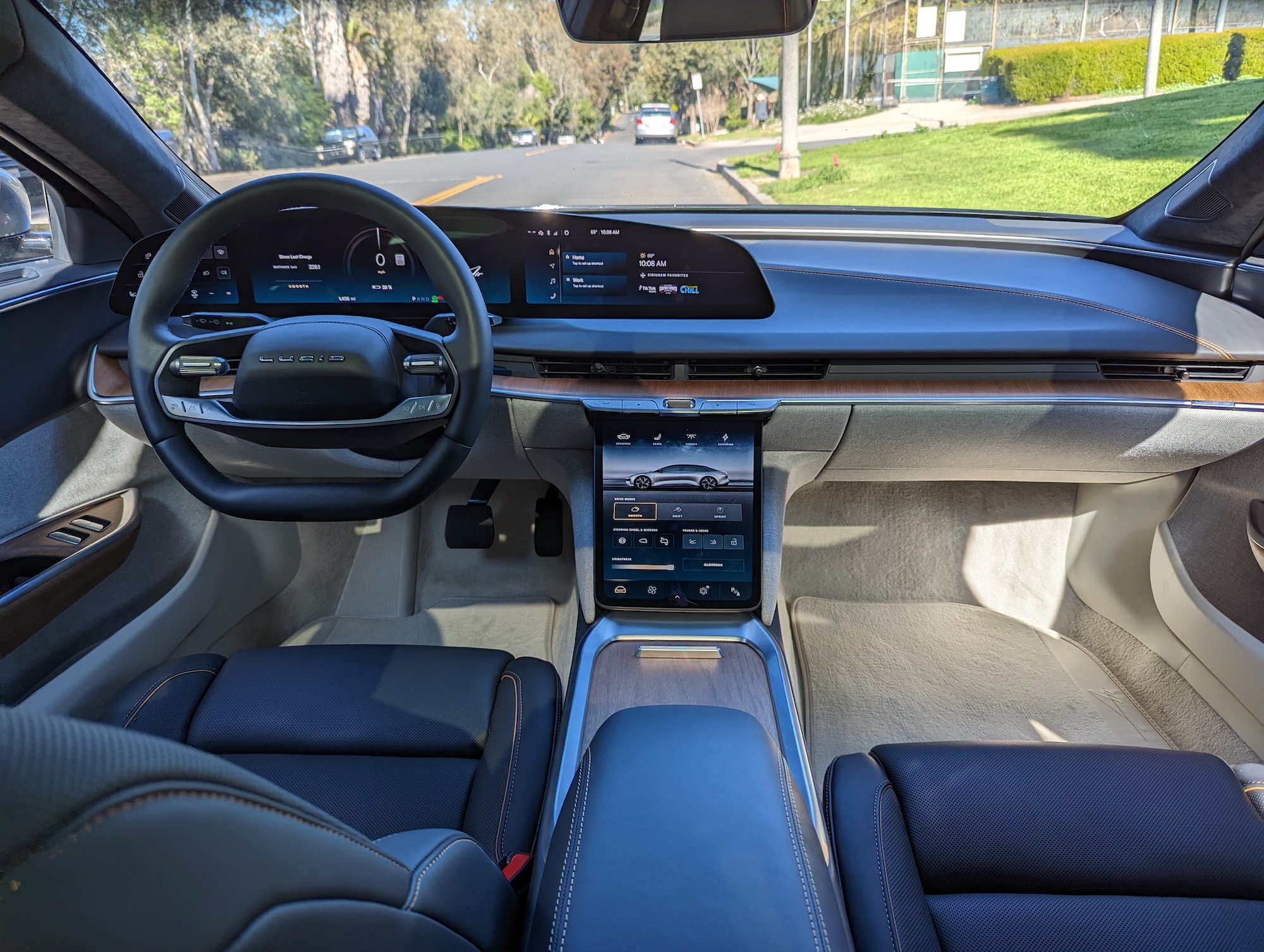
Image Credits: Abigail Bassett
Lucid has taken a page from Tesla’s book, eliminating nearly all the buttons inside the sedan and relying on a pair of large touchscreens for everything from climate to car settings.
The lack of physical buttons offers a clean look at a cost.
Need to change the position of the steering wheel or wing mirrors? You’ll need to do that through the infotainment touchscreen. Want to open the glovebox or kick the Lucid Air Touring into one of its other drive modes? Find the icons on the infotainment screen. Hunting for icons is far from ideal while driving, but it is possible to get used to the process.
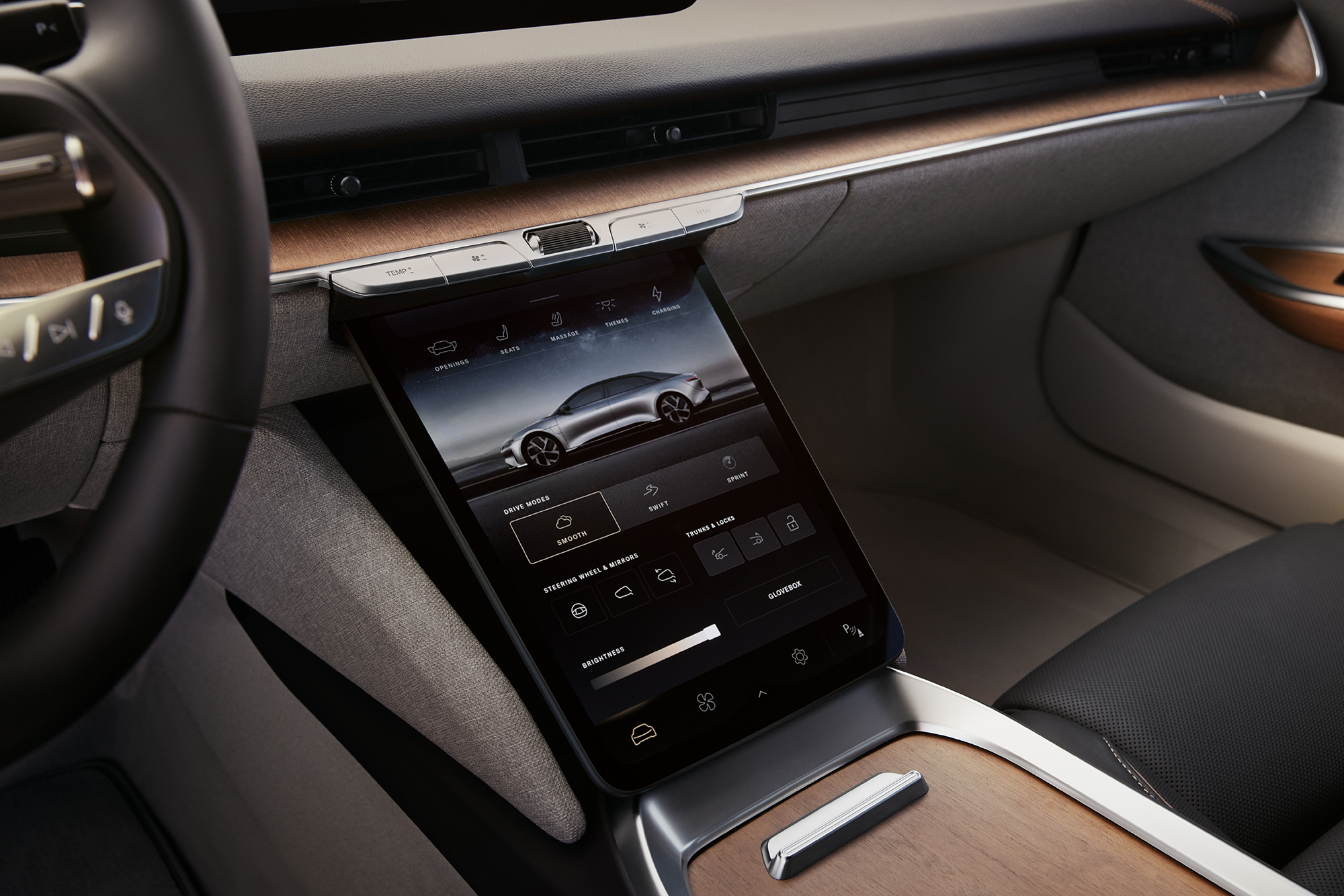
Image Credits: Lucid
That dual-screen layout does have its advantages.
Users can swipe content from the upper wing-like display that stretches from the driver’s side to middle of the vehicle, down to the infotainment display. While it does reset when you turn the car off, it’s a nice feature if you want to rearrange where your mapping, radio station or drive control details are.
There are a couple of small switches that you can nudge up or down, at the center of the dash, immediately above the infotainment screen. These act as quick temperature and fan controls.
There is also a small, grooved cylinder in the center that acts as a volume control for the optional Dolby Atmos sound system that my test car came with.
The only buttons in the entire interior sit on the two grooved cylinders on the steering wheel. These control the advanced adaptive cruise control system and the following distance (more on that below) as well as a few features on the infotainment system.
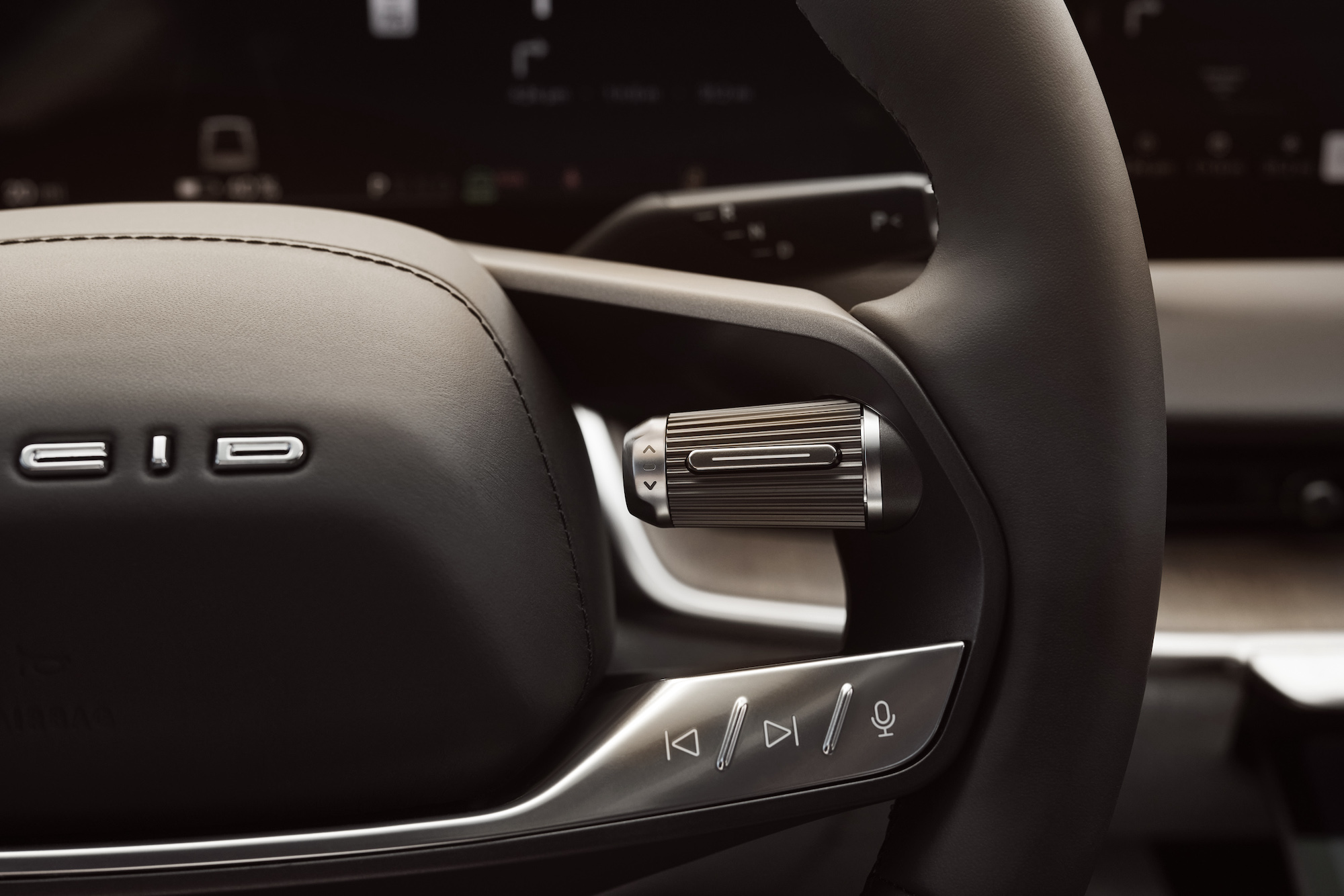
Image Credits: Lucid
While that giant sunroof is a head-turning exterior detail, it also happens to be a bit of a head-baking feature on the inside.
I took the Touring out for a 230-mile run down toward Temecula on a Sunday when the temperatures climbed toward the high 70s and low 80s in some of the drier, less forested areas.
While the glass roof is treated to cut down on UV and heat issues inside the cabin, there’s no physical shade to cover it. Because the windshield blends seamlessly into the roof, standard opaque sun visors offer the only respite. It did get rather warm on my drive, and there was nothing to do but crank the AC a bit higher.
At the same time, that glass roof, combined with the low floor of the vehicle, gives the interior an open and almost cavernous feeling, which is quite nice, especially on a long drive.
Under the floor in the Lucid Air Touring sits a 92-kWh battery pack. That’s the key difference between the more expensive and longer-range Grand Touring, which gets a larger 112-kWh battery pack, giving it more range. Because Lucid essentially removed a few battery cells from the floor, rear passengers get slightly deeper footwells.
Alexa woes
The technology inside the Lucid Air Touring is both impressive and, yet, simultaneously unperfected.
However, it should be noted that since my test drive Lucid has made one critical improvement to its infotainment offerings by rolling out Apple CarPlay to every Lucid via an over-the-air software update.
My biggest frustration was using the Amazon Alexa voice assistant to control features like navigation and temperature control. Point blank, Alexa is atrocious as an in-car system. I’ve used it in other EVs like the Rivian R1S and hated it equally, and it’s no better in the Lucid Air Touring.
I used Alexa to navigate to a few locations around Temecula once I arrived. Despite speaking clearly and slowly, Alexa repeatedly failed to understand my destination. I became so frustrated with the system that I gave up yelling at it and pulled off the road to manually put the destination in through the infotainment touchscreen.
I also spent about an hour without SiriusXM reception, even though I was in clear view of the sky for the duration of my trip. It took cycling the car on and off to get it to come back.
In addition to almost useless voice recognition, Alexa’s mapping is far inferior to Google, MapBox or other systems that other OEMs use for their onboard mapping. Alexa was so awful that it put me on a dirt road to get to the city of Pala Mesa, a location that Google showed had plenty of paved roads.
Driver assistance
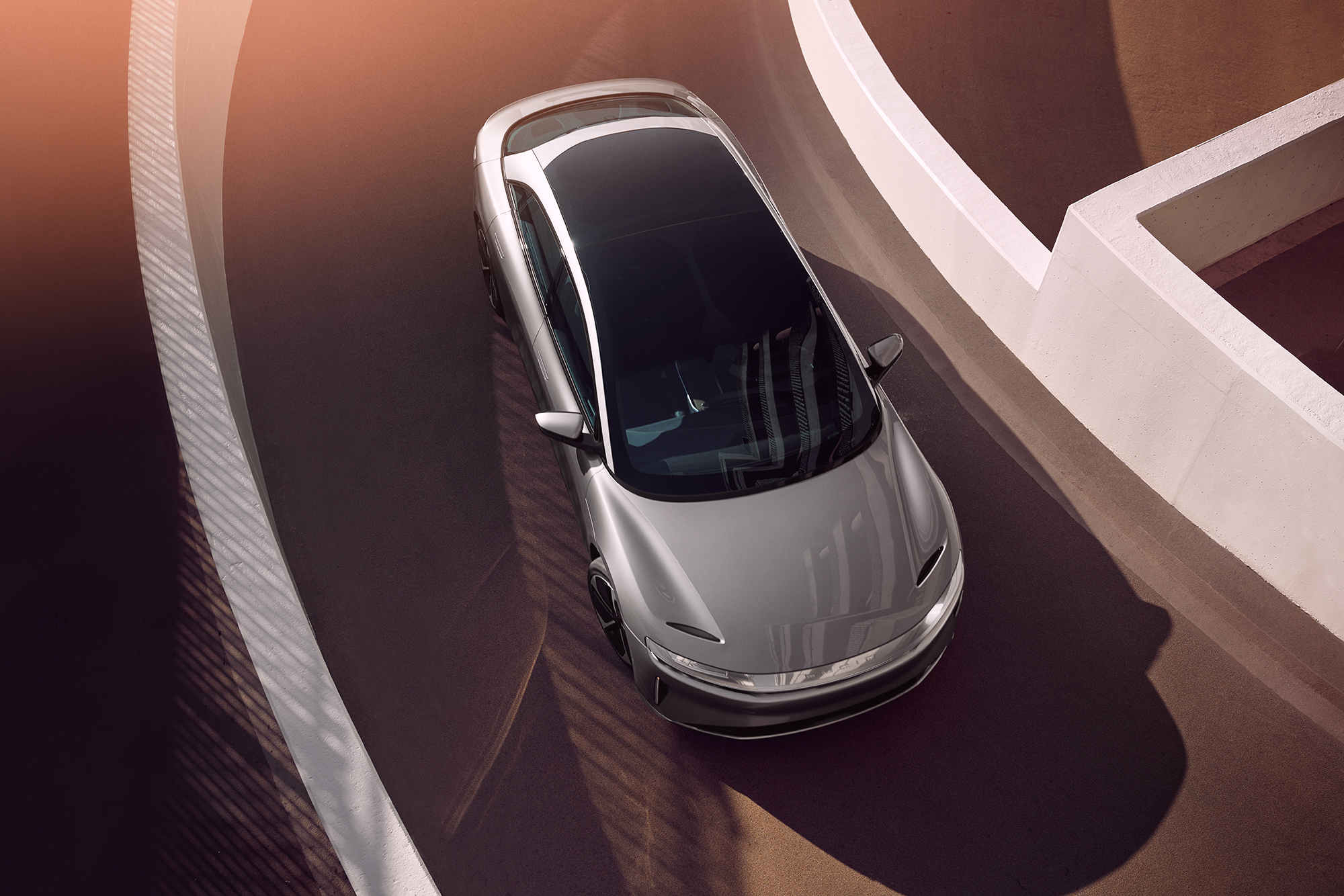
Image Credits: Lucid
My test vehicle had Lucid’s DreamDrive Pro, which includes “future-ready semi-autonomous driving functionality,” and surround view monitoring with blind-spot display.
To activate the system, the driver uses the cylinders and buttons on the steering wheel to set speed and following distance. On fast-moving highways, the system behaves as expected, keeping a respectful following distance and maintaining speed, slowing down to a stop, and speeding back up as any reasonable human driver would.
When the adaptive cruise is disengaged, however, the aggressive brake regeneration kicks in and starts to slow the car quickly. That can be problematic in 70 miles-per-hour traffic, and it’s not completely clear when the system is engaged versus when it isn’t. The icon that appears on the driver’s display is small and easy to miss if you’re trying to negotiate a lane change at speed.
The lane-keeping and departure assistant leaves a lot to be desired, too. The system tends to want to keep the sedan right up against the right line, which can be hairy when passing a semi-truck or when you live in California, where it’s legal for motorcycles to lane split.
The lane-keeping also has an odd sticking behavior when you try to break it away from its right-justified habits.
Say you want to make space for a motorcycle that’s splitting lanes in traffic, and you’re using the lane-keeping and departure systems. You have to tug the wheel through what feels like a sticky spot (almost like it freezes) to get the car to respond and move over. That results in more steering input that causes the driver to have to correct to get back to the middle of the lane.
After fighting the system, I finally abandoned the system altogether.
Finally, there’s the distracted driver warning. It’s a valuable tool designed to keep driver’s eyes on the road. But it is so sensitive that I received alerts even when I briefly looked through the passenger side window to check my blind spot.
Where the Lucid Air Touring shines
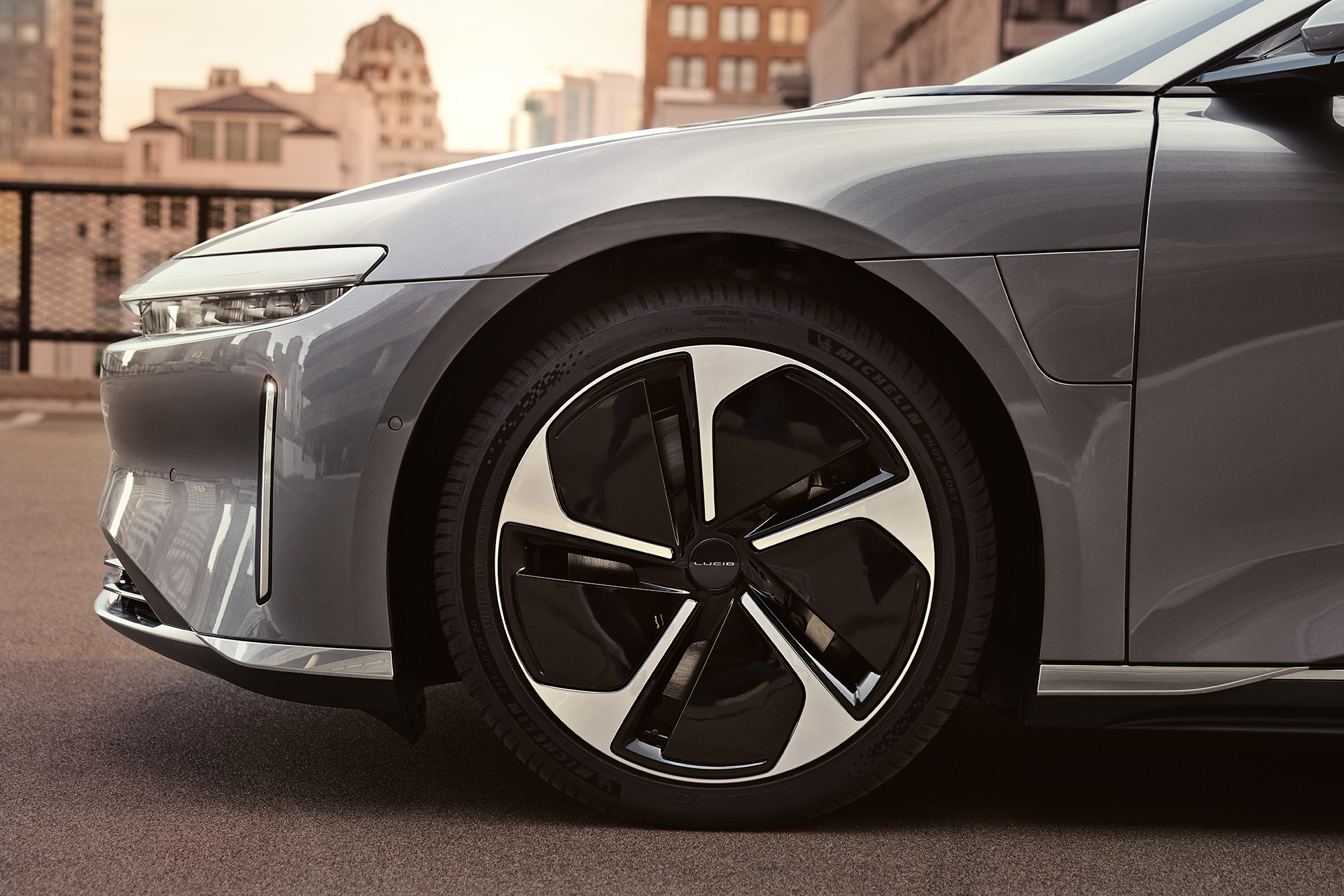
Image Credits: Lucid
On the road, however, the Lucid Air excels. It’s quiet inside, and despite its size, the vehicle is surprisingly easy to wheel on single-lane winding roads. Plus, when you roll down the windows to take in the lovely weather it’s nearly silent outside, as well.
Range is where the Lucid Air Touring truly shines, however. That tremendous EPA-rated 384 miles of range takes real effort to deplete. When you do have to plug in on a road trip, hit the battery preconditioning icon on the infotainment screen and put in an Electrify America DC fast charger nearby, and you can regain as much as 300 miles of range in 21 minutes, according to Lucid.
The company also offers three years of free charging on Electrify America. That range alone surpasses most luxury EVs on the market.
I did the 230-mile round trip run in stop-and-go LA traffic and saw an average of 3.4 kW per mile — better than any of the other luxury EVs I’ve tested recently.
The Air Touring comes with three standard modes, Smooth (eco/comfort), Swift (sport) or Sprint (sport +, where you can access the launch control function). I spent most of my test drive in Smooth since I was doing a significant amount of highway driving.
In any mode, you can set the braking regeneration to a high or low setting. That regen, even in the lower setting, is aggressive. The moment you take your foot off the accelerator, the car will begin to slow quickly, which is great in stop-and-go traffic but less than ideal on fast highway runs or when the adaptive cruise shuts off unexpectedly.
Once you get used to it, you’ll almost never have to touch the brake. If you’re coming out of ADAS, you’d better be ready to get on the accelerator to prevent a major slowdown.
About those reservations
Lucid is a company full of automotive veterans who know how to design and create some of the best vehicles on the market. In spite of all of that talent, I still had to fight with features that come standard (and work) in lower-priced gas-powered and electric vehicles.
Drivers should not have to actively manage lane-keeping and centering features. And while Alexa is fine for shopping, it’s one of the worst systems on the market for navigation.
My test car, with its handful of additional options like the paint color, glass roof, upgraded sound system and “future-ready semi autonomous systems,” netted out at a whopping $128,550.
While that’s less than a fully loaded BMW i7 (with a massive movie screen in the back and all the executive features you could want), it still left me a bit disappointed compared to my first drive in a Lucid Air Dream a couple of years ago.
The Lucid Air Touring will certainly win the EV range wars, but the ADAS software and onboard navigation through Alexa still need some tweaks to truly take on the established players like Audi, BMW, Mercedes, Porsche and Tesla.

